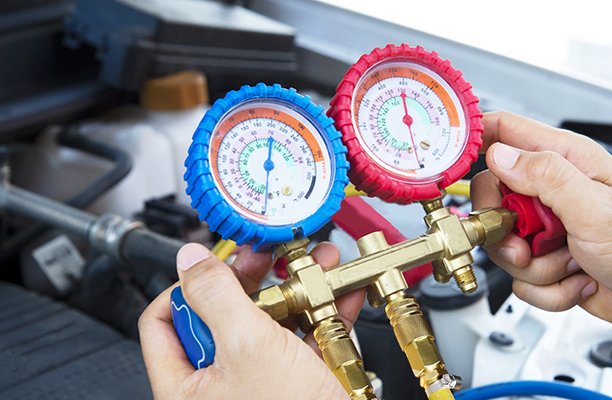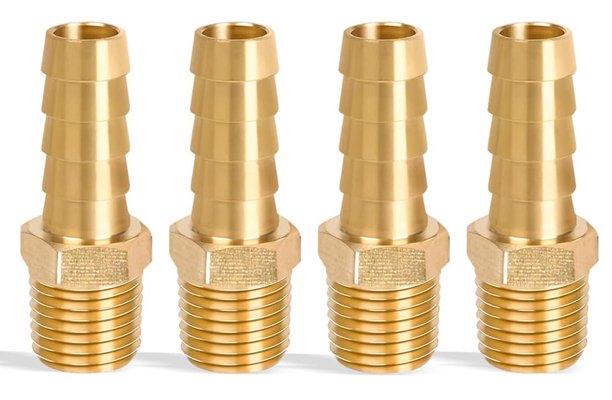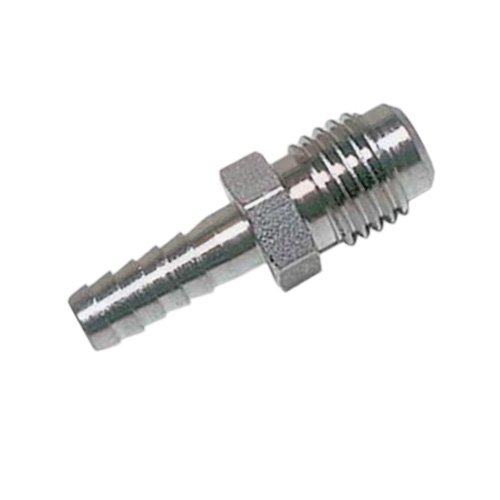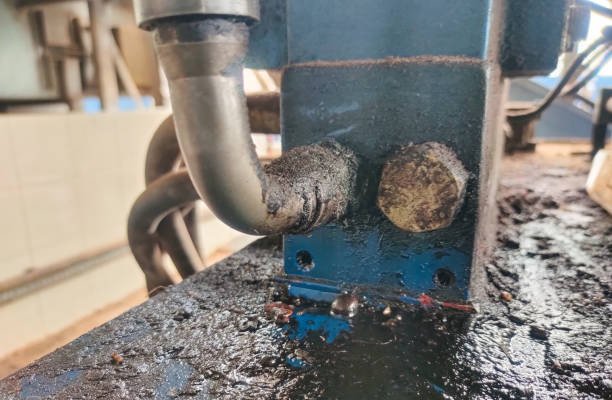Barbed fittings—ever heard of them? If not, don’t worry, because this guide will bring you up to speed on everything you need to know about these unsung heroes of fluid and gas transfer systems. From plumbing to industrial machinery, barbed fittings make secure, leak-proof connections possible. Whether you’re a DIY enthusiast or a seasoned professional, understanding barbed fittings can save you time, money, and frustration.
This blog dives into the world of barbed fittings: what they are, how they work, and why they’re an essential piece in many applications. Let’s get started!
What Are Barbed Fittings?
Barbed fittings are small connectors designed to join flexible tubing or hoses to a system. They feature ridges—or “barbs”—on one end that grip the inner surface of a hose, creating a tight and leak-proof seal. The other end typically connects to a threaded or push-fit pipe or device.
They are popular because of their ease of use and effectiveness in various systems, like water lines, gas transfer setups, and pneumatic systems. They’re ideal for both high-pressure and low-pressure applications and work well in industries ranging from agriculture to automotive.
Key Benefits of Barbed Fittings
- Leak-Proof Seal:
The barbed design ensures a secure fit, minimizing the risk of leaks. - Simple Installation:
No special tools or adhesives are needed—just push the hose onto the barb! - Versatility:
Suitable for use with various materials like rubber, PVC, and polyethylene tubing. - Cost-Effective:
Barbed fittings are affordable and widely available. - Reusable:
In some cases, you can disassemble and reuse barbed fittings.
Types of Barbed Fittings
Barbed fittings come in many shapes, sizes, and materials to meet diverse needs. Let’s break them down:
1. By Material
- Brass: Known for durability and corrosion resistance, brass barbed fittings are perfect for plumbing and automotive use.
- Plastic: Lightweight and cost-effective, plastic fittings are commonly used in irrigation and low-pressure systems.
- Stainless Steel: Excellent for high-pressure or chemical-resistant applications, often found in industrial setups.
2. By Configuration
- Straight Barbed Fittings: These connect hoses in a straight line, ideal for simple connections.
- Elbow Barbed Fittings: For connecting hoses at a 90-degree angle.
- Tee Barbed Fittings: Perfect for splitting a single line into two.
- Reducer Barbed Fittings: Used to connect hoses of different sizes.
3. By Size
Barbed fittings are available in a wide range of diameters to fit specific hose or tubing sizes. Always measure your tubing accurately to ensure a snug fit.
How Do Barbed Fittings Work?
Barbed fittings rely on the friction created by their ridges to form a tight seal with the hose. When the hose is pushed onto the barbs, the ridges grip its inner surface, preventing it from slipping off. For even better security, hose clamps can be added around the connection, especially in high-pressure systems.
Comparison: Barbed Fittings vs. Other Connector Types
When it comes to choosing the right connector for your plumbing or fluid transfer system, they aren’t your only option. But how do they stack up against other types of connectors? Here’s a comparison to help you decide:
| Connector Type | Advantages | Disadvantages |
|---|---|---|
| Barbed Fittings | – Easy to install without specialized tools – Leak-proof with hose clamps – Affordable and versatile | – May require clamps for high-pressure systems – Hose can be difficult to remove |
| Threaded Fittings | – Strong and reliable – Works well with rigid piping – Reusable | – Requires tools for installation – Susceptible to thread damage over time |
| Push-to-Connect | – Quick and tool-free installation – Ideal for pneumatic systems | – More expensive – Limited to specific hose/tube sizes |
| Compression Fittings | – Strong seal for rigid pipes and tubes – Suitable for high-pressure systems | – More complex installation – Not compatible with flexible hoses |
| Flare Fittings | – Excellent for high-pressure gas systems – Provides a durable seal | – Requires special tools to flare the tubing – Higher cost than barbed fittings |
Common Applications of Barbed Fittings

1. Plumbing Systems
- Connect pipes in residential and commercial setups.
- Ideal for water filtration units and irrigation.
2. Automotive Industry
- Used in fuel lines, coolant systems, and hydraulic applications.
- Ensure secure and vibration-resistant connections.
3. Medical Devices
- Transfer fluids in intravenous (IV) systems and diagnostic equipment.
- Provide sterile and leak-proof connections.
4. Food and Beverage Industry
- Transport liquids in breweries, dairy processing, and beverage dispensers.
- Use food-grade materials like polypropylene.
5. Laboratory Equipment
- Deliver precise fluid flow in analytical and chemical apparatus.
- Suitable for low-pressure systems.
6. Industrial Manufacturing
- Transfer lubricants, coolants, and other industrial fluids.
- Ensure reliability in high-stress environments.
Why Choose Barbed Fittings?
Barbed fittings are a standout choice when working with flexible hoses or tubing. They’re easy to use, cost-effective, and versatile enough for a variety of applications. While they may not have the ultra-secure seal of threaded or compression fittings, adding a hose clamp often bridges this gap, especially in high-pressure scenarios. For most DIY and industrial projects involving flexible hoses, barbed fittings hit the sweet spot between affordability and performance.
Installation Tips
Installing barbed fittings is simple, but here are a few tips to ensure success:
- Select the Right Size: Measure the inner diameter of your hose or tubing carefully. A too-small fitting won’t fit, and a too-large one might damage the hose.
- Soften the Hose End: If the hose is stiff, soak the end in warm water for a few minutes to make it more pliable.
- Push Firmly: Apply steady pressure while pushing the hose onto the barb. Twisting can also help.
- Use Hose Clamps: For added security, place a hose clamp over the connection and tighten it.
- Check for Leaks: After installation, test the system under pressure to ensure there are no leaks.
Removing Rubber Hose from Barbed Fittings
Removing a rubber hose from a barbed fitting can be tricky, especially after it’s been tightly secured or used for a long time. Here’s a step-by-step guide to make the process easier and prevent damage to your equipment:
Tools You’ll Need:
- Razor blade or utility knife
- Flathead screwdriver (optional)
- Pliers (optional)
- Soapy water or lubricant (optional)
Method 1: Twist and Pull
- Grip the rubber hose firmly with one hand and the fitting with the other.
- Twist the hose gently while pulling it away from the fitting.
- Apply some soapy water or lubricant to reduce friction if the hose is stuck.
Note: This method works best for hoses that haven’t been on the fitting for too long or in low-pressure systems.
Method 2: Use a Flathead Screwdriver
- Insert the tip of a flathead screwdriver between the hose and the barb.
- Carefully pry the hose away from the barb while twisting and pulling.
- Be cautious not to damage the barb or puncture the hose if you plan to reuse it.
Method 3: Cut the Hose Off
- If all else fails or if the hose is too old or damaged to be reused, use a razor blade or utility knife to cut it off.
- Slice the hose lengthwise along the barb, being careful not to nick the fitting itself.
- Peel the cut section of the hose away from the barb.
Pro Tips:
- Avoid using excessive force, as this can damage the barb or the hose.
- In high-pressure systems, hose clamps or tight fittings may make removal harder, so loosen clamps first if applicable.
- Always inspect the barbed fitting for damage after removal, especially if you used tools like a knife or screwdriver. A damaged barb can lead to leaks or improper seals during the next installation.
Conclusion
Barbed fittings might be small, but they play a big role in fluid and gas transfer systems. Their ease of use, cost-effectiveness, and versatility make them a go-to choice for countless applications. By understanding the different types, materials, and installation methods, you can confidently choose the right barbed fittings for your next project.
FAQs
1. Can barbed fittings be reused?
Yes, metal barbed fittings can often be reused if they are undamaged, but plastic fittings are usually single-use due to wear and deformation.
2. Are barbed fittings compatible with all tubing materials?
Barbed fittings work best with flexible tubing such as PVC, rubber, and silicone. Compatibility depends on the material and application.
3. How do I prevent leaks in barbed fittings?
Ensure proper tubing size, secure the connection with hose clamps, and check for wear regularly.
4. What is the pressure limit for barbed fittings?
Pressure limits vary based on material and design. Stainless steel fittings, for instance, can handle higher pressures than plastic ones.
5. Are barbed fittings suitable for high-temperature applications?
Yes, but the material must withstand the temperature range. For instance, stainless steel is suitable for high temperatures, whereas plastic may not be.
6. How do I remove tubing from barbed fittings?
Use a sharp blade to carefully cut the tubing near the barb, ensuring the fitting itself isn’t damaged.






